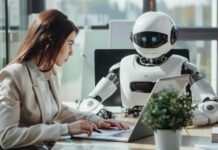In the high-stakes talent economy of today, the fight is not just for share of market—it’s for minds and abilities that can future-proof a company. It’s now up to C-suite executives to rethink recruitment, onboarding, and acquisition programs to establish holistic, future-fit talent journeys. What is arising instead is a paradigm—one in which wiser recruitment, strategic acquisitions, and frictionless onboarding no longer exist in silos but as one compelling force accelerating enterprise growth.
Table of Contents:
1. Why Conventional Talent Journeys Fall Short
2. Acquisitions as Strategic Talent Accelerators
3. AI-Powered Recruitment Isn’t Optional Anymore
4. Seamless Onboarding Is Now a Competitive Differentiator
5. Building an Agile, Resilient Workforce
Final Thought—It’s Time to Rethink the Whole System
1. Why Conventional Talent Journeys Fall Short
Candidate expectations have developed more rapidly than most companies have kept up. In 2025, the international workforce is more mobile, values-driven, and tech-savvy. A Gartner report verifies that 68% of CHROs are remaking their recruitment models in order to match changing candidate priorities, particularly with respect to flexibility, career development, and employer culture.
Standard recruitment pipelines—built for speed and efficiency—struggle to address these nuanced expectations. Enhancing talent journeys requires more than filling roles. It demands a holistic framework that aligns talent strategy with broader business goals and market realities.
2. Acquisitions as Strategic Talent Accelerators
Strategic acquisitions are no longer just vehicles for market expansion. Increasingly, they serve as pipelines for premium talent—an intentional shift from viewing acquisitions as asset-centric to people-centric. In 2023, Salesforce acquired Slack not only for its product integration potential but also to secure high-performing tech talent and leadership. This trend has only deepened. According to McKinsey, over 50% of recent acquisitions in the tech sector cite “strategic talent acquisition” as a core driver.
But the challenge doesn’t end at acquisition. Without a seamless onboarding process post-M&A, companies risk attrition, cultural misalignment, and productivity dips. The integration of teams must be seen as a strategic recruitment effort in itself, where onboarding isn’t just administrative but transformational.
3. AI-Powered Recruitment Isn’t Optional Anymore
Smarter recruitment is defined by intelligent, adaptive systems that personalize candidate interactions and predict retention success—not just qualifications. By 2025, over 70% of global enterprises use AI tools to enhance recruitment solutions, says a recent IDC report. These systems analyze behavioral data, team dynamics, and even cultural fit to ensure talent not only joins—but stays.
Crucially, this shift toward AI in recruitment solutions also redefines inclusivity. Advanced algorithms, when designed ethically, reduce bias and enhance fairness in candidate selection. Smarter recruitment solutions go beyond automation—they reflect a philosophical shift in how we value human potential.
4. Seamless Onboarding Is Now a Competitive Differentiator
The cost of poor onboarding is no longer negligible. SHRM reports that 50% of turnover among senior-level hires happens within 18 months, often due to inadequate onboarding. In response, leading companies now view onboarding as an extension of strategic recruitment—embedding training, cultural immersion, and performance frameworks from day one.
Recruitment solutions for seamless onboarding integrate AI, LMS platforms, and employee experience tools to ensure that every touchpoint in the onboarding journey contributes to engagement and productivity. These tools are no longer a luxury—they are a business necessity.
5. Building an Agile, Resilient Workforce
C-suite leaders are shifting toward talent strategies that are both proactive and resilient. This requires abandoning fragmented approaches in favor of a unified talent architecture—one that incorporates strategic acquisitions for talent journeys, smarter recruitment technologies, and onboarding processes as one seamless continuum.
For example, Unilever’s “Future of Work” strategy integrates predictive workforce planning, talent acquisition, and personalized onboarding into a single framework—reducing time-to-productivity by 35% across its new hires in 2024.
This is what the future demands: not faster hiring, but smarter orchestration.
Final Thought—It’s Time to Rethink the Whole System
The question isn’t whether recruitment or acquisition needs to evolve. It’s whether we’re ready to view talent journeys as an integrated business function—one as critical as finance or operations. Enhancing talent journeys is not a tactical adjustment. It’s a strategic imperative.
Executives who embrace this integrated vision—through strategic acquisitions for talent journeys, smarter recruitment, and recruitment solutions for seamless onboarding—will not only attract the best talent but shape the future of work itself.
Are we ready to lead that future? Or will we continue to let outdated systems slow us down?
The answer, as always, will define the winners and the forgotten in tomorrow’s marketplace.
Explore Hrtech Articles for the latest Tech Trends in Human Resources Technology












